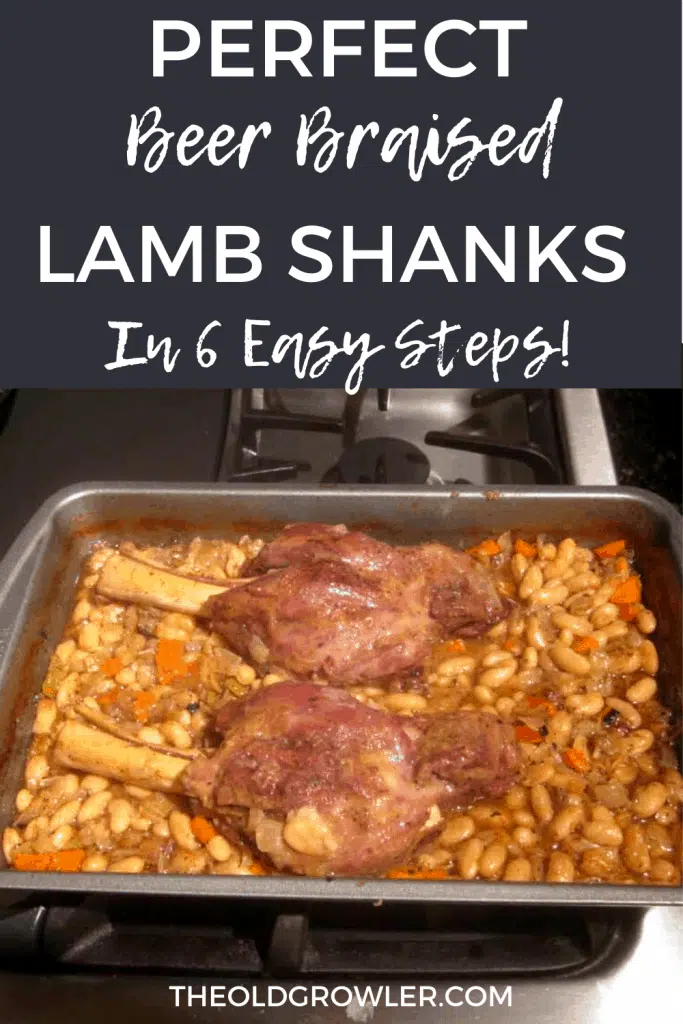Why Lamb Shanks?
First, it’s a relatively inexpensive cut of meat. Next, it is a flavorful cut of meat, including the bones, tendons, and elongate muscles. When cooked low and slow, they become tender and succulent. And best of all, using the following technique, it requires minimal cooking skills.
Let me walk you through it using six simple steps:
The First Step
Assemble everything that you are going to need.
- First is a baking pan you will cook it in (preferably a Dutch oven or a large covered casserole); as you can see, I used an uncovered roasting pan.
- You will also need the following utensils: a sharp knife, a cast-iron or enamel-coated frying pan, a cooking fork
- And Equipment: a small bowl (2 cups minimum), a medium-sized bowl (8 cups minimum), and a large bowl (2 quarts), a cutting board, a roll of wax paper, and a roll of aluminum foil.
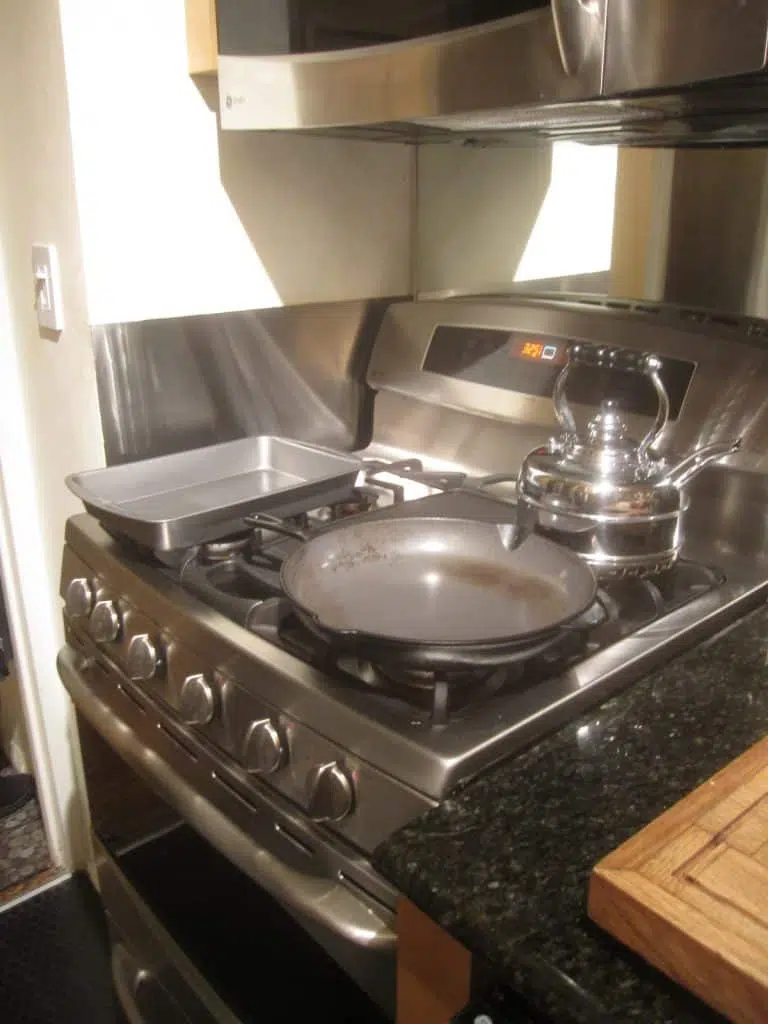
The ingredients:
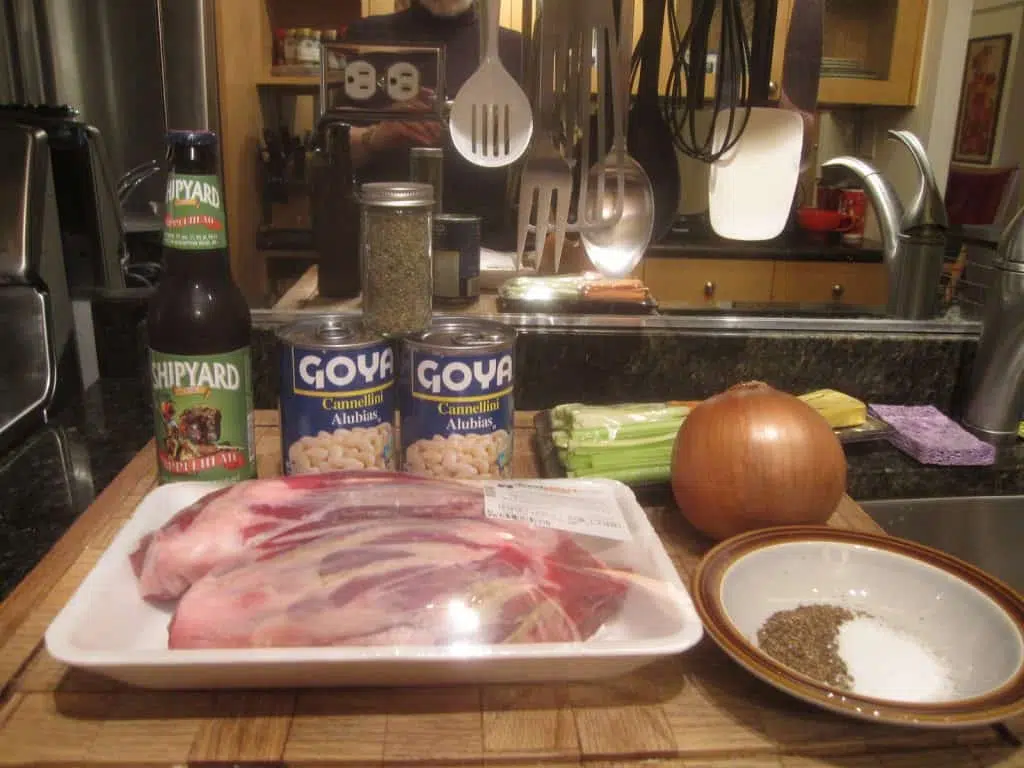
INGREDIENTS:
2 lamb shanks
1 medium-sized onion
2 large carrots (I used pre-cut)
2 sticks of celery (I used pre-cut)
4 tablespoons of olive oil
2 (#10 size) cans of white beans
1 sprig of fresh marjoram (dried marjoram is passable)
1 tablespoon salt
1 cup of flour in a dish that you can put the flour in that will accommodate at least one lamb shank.
1 tablespoon cracked black pepper
One 12-ounce bottle of beer
The First Step:
Prepare your ingredients for cooking.
- Open the cans of beans and pour them into the large bowl (2 quarts).
- Peel the onion and cut it up into pieces. It really does not make any difference in the pieces’ size, as long as it is cut more than in half. The smaller the pieces, the more they will incorporate into the dish (at least 8 to 10 pieces). I “diced” the onions; I like the way they cook better than larger pieces.
- The carrots and celery I had were already semi-prepared. That made it easier for me to cut them into the same size as the onions so that they will cook evenly.
Now is a good time to heat the oven to 325°F… It is also an excellent time to put that cast-iron or enamel skillet on a medium-high flame on your range top. If you are cooking with electricity, medium-high will work.
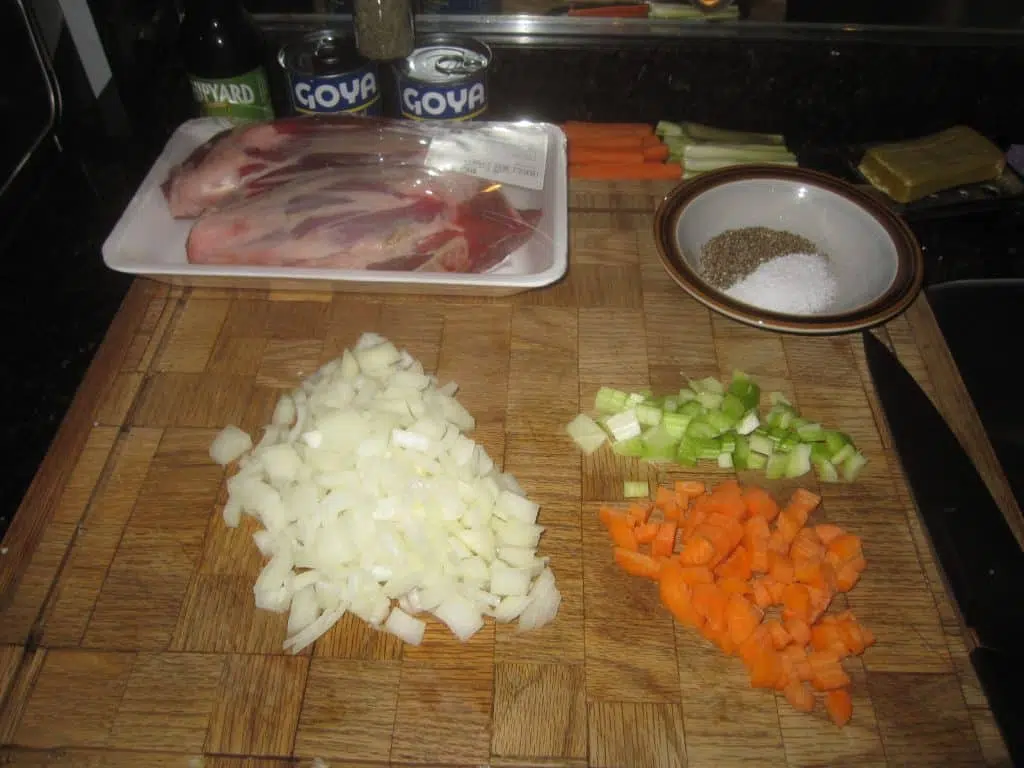
Step 2
Now it is time to prepare the Lamb Shanks
- Put the flour in the dish that that will accommodate at least one lamb shank.
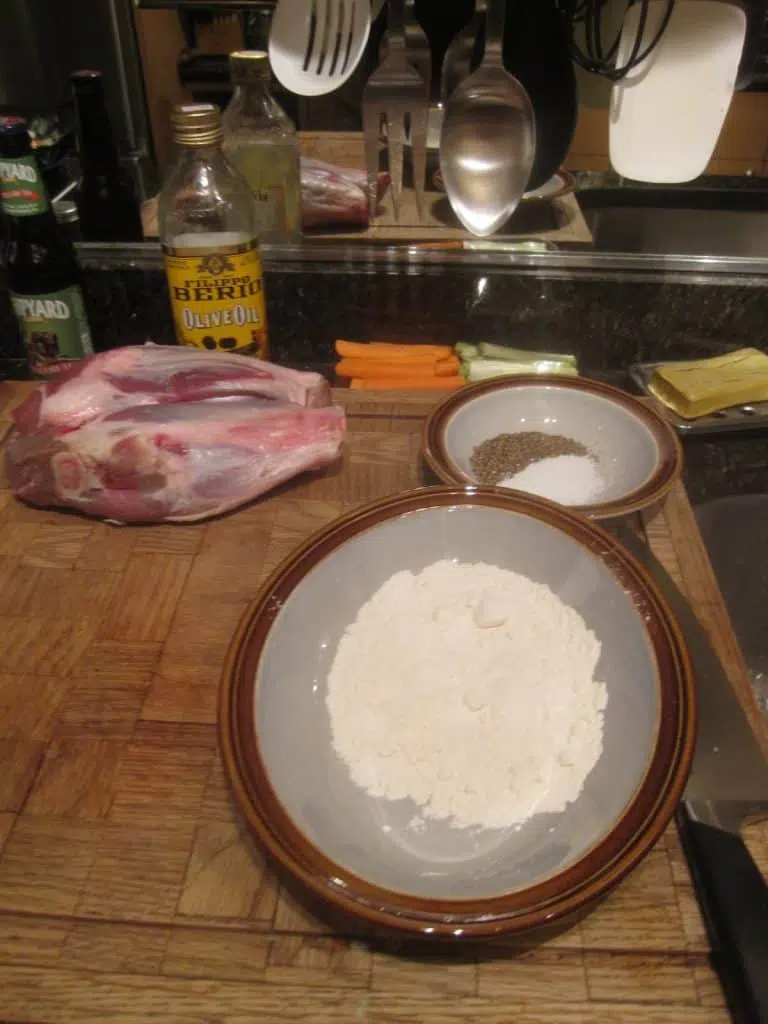
- Unroll enough wax paper to cover the cutting surface, tear it off the roll and place it on the cutting surface. Place the lamb shanks on the wax paper.
- Sprinkle all sides of the lamb shanks with salt and pepper. Don’t be afraid of using too much. Then turn them over and salt and pepper the other side.
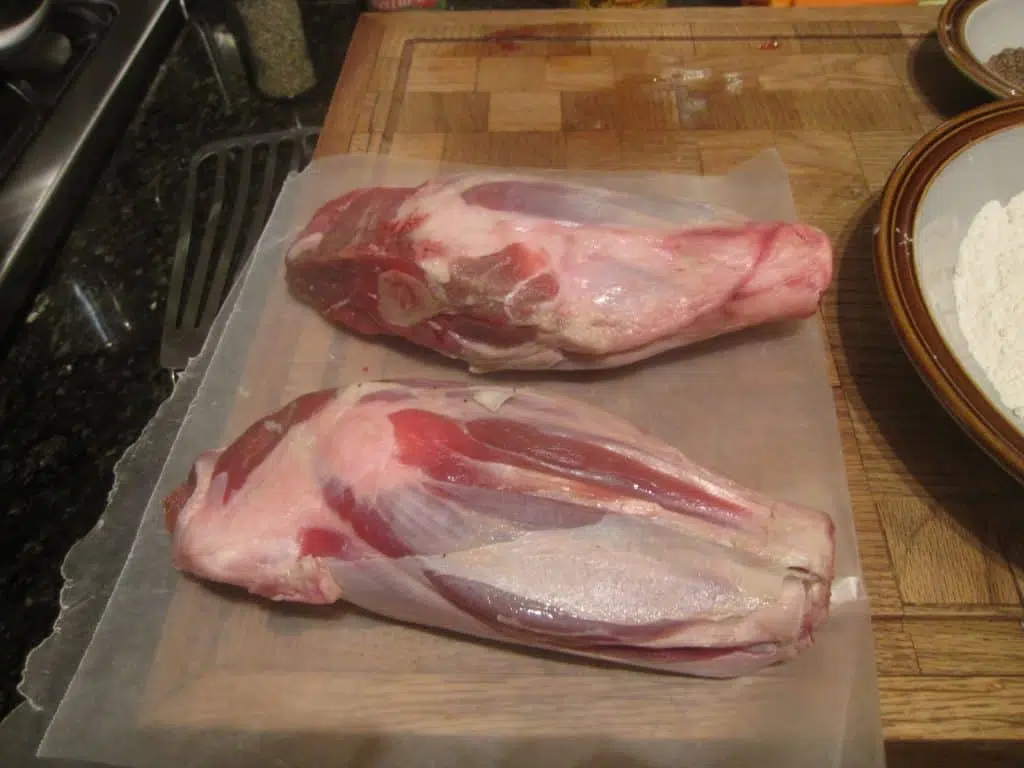
Step 3
- Once the lamb shanks are covered with salt and pepper, one at a time, put them in flour and roll them until they are well coated in flour.
- Place them back on the wax paper and turn your attention to the cast iron skillet or enamel frying pan that you placed on the medium heat burner of your range.
- Pour 2 tablespoons of the olive oil into the heated frying pan or cast-iron skillet, after 2 min. Place the lamb shanks in the olive oil and brown them on all sides.
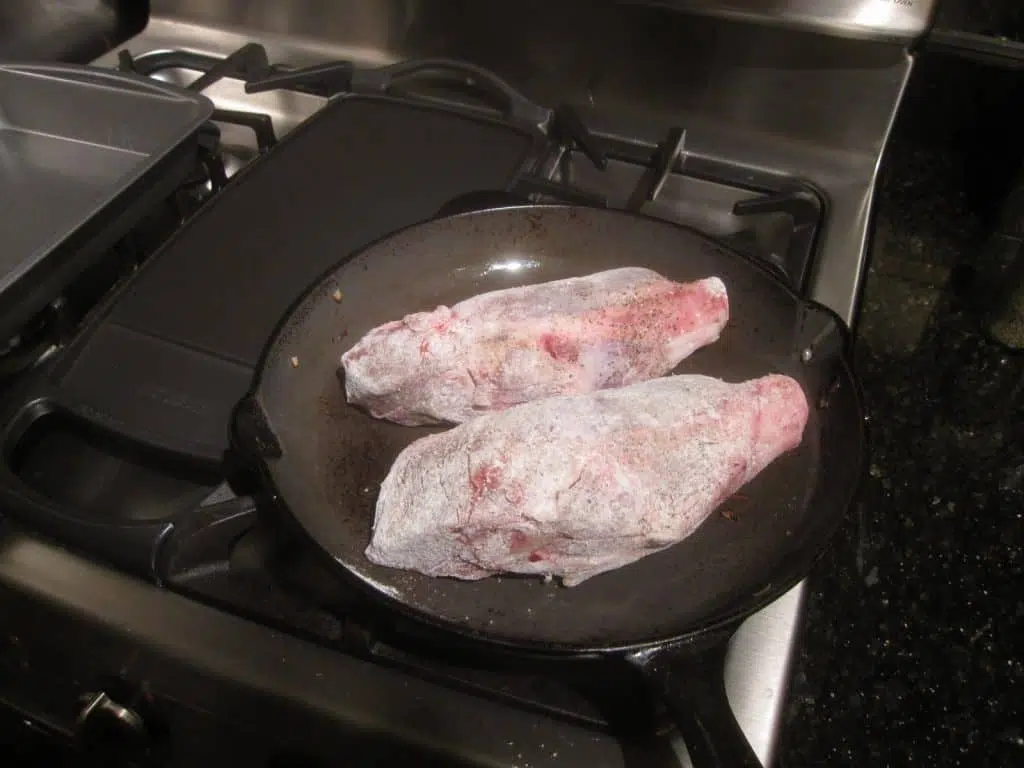
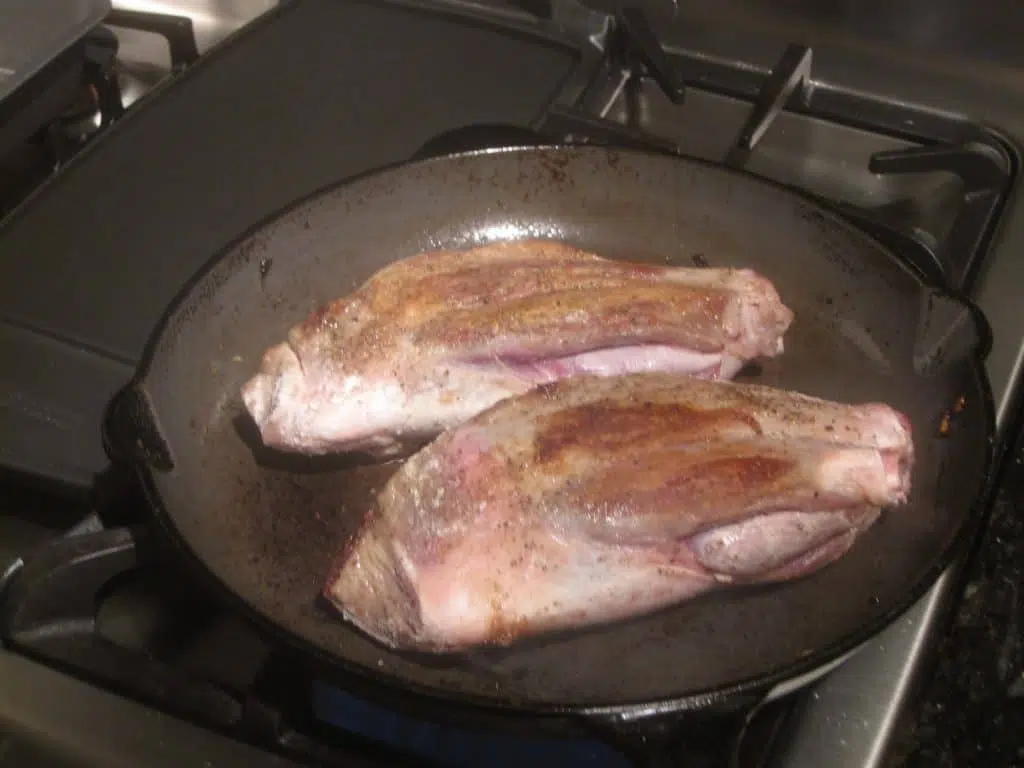
Step 4
- Brown the lamb on all sides (browned almost to burnt). Remove the lamb shanks from the frying pan and place on a plate. Cover with aluminum foil to keep warm.
- In the frying pan, with all the good stuff left in the bottom, add the onions, and cook until translucent.
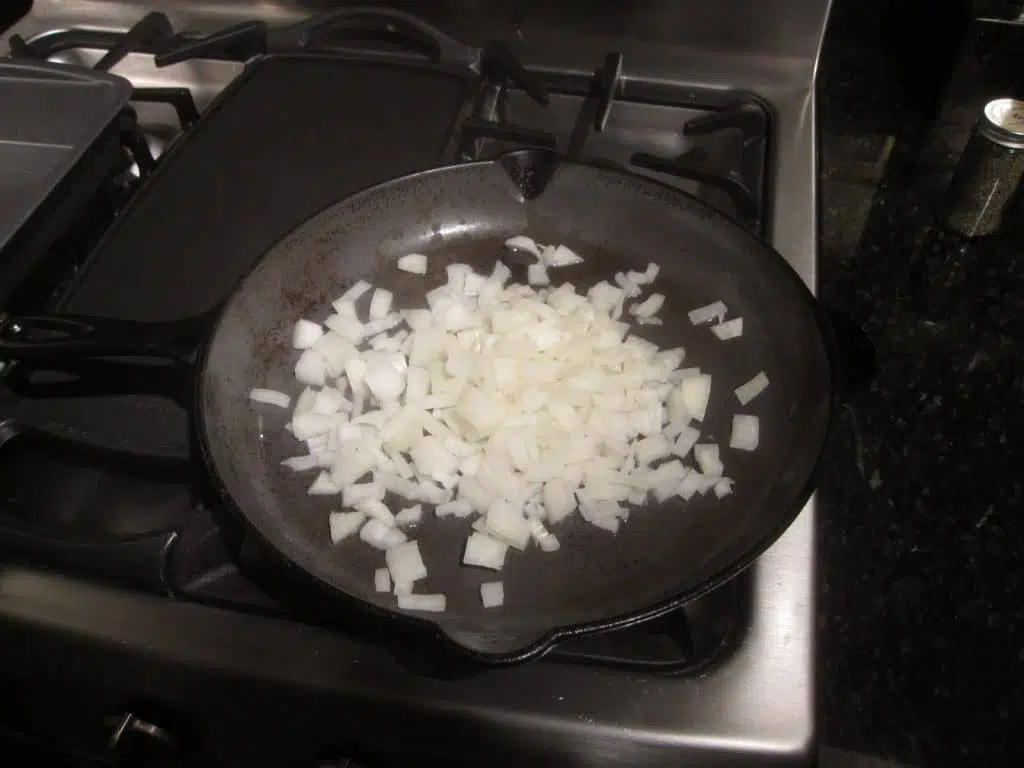
- Place the vegetables you have cut up earlier into the frying pan or skillet you browned lamb shanks in. Add 2 tablespoons of olive oil and sauté until the vegetables are soft.
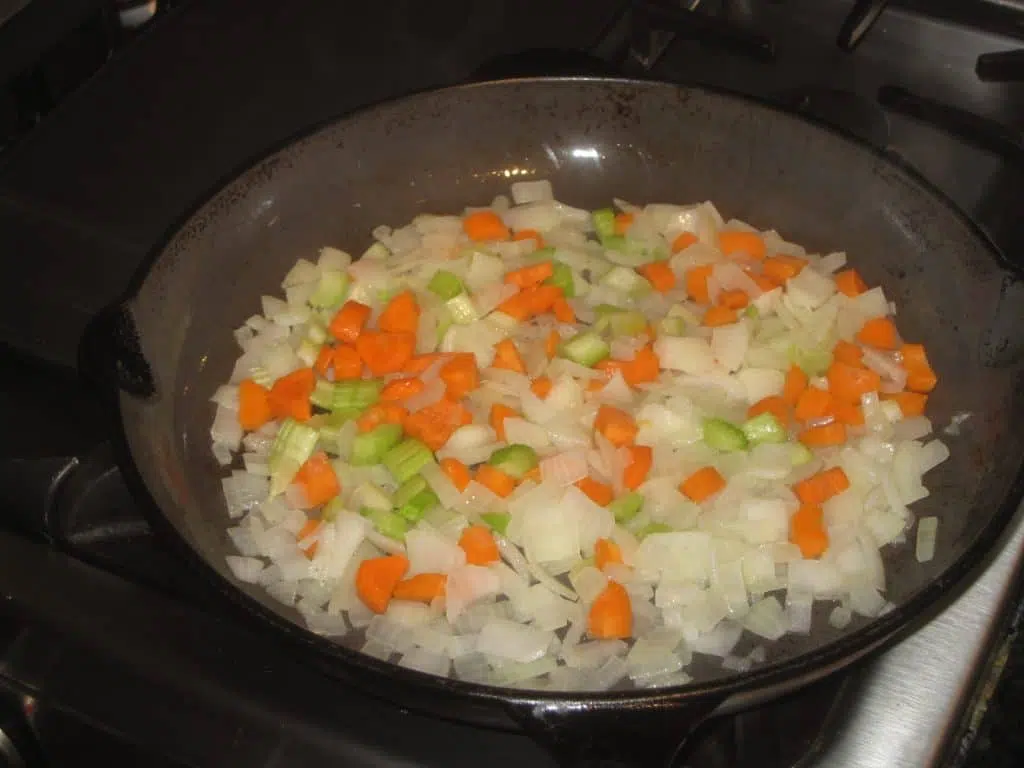
- Remove the vegetables from the frying pan or skillet. In a bowl large enough to hold everything, open the cans of beans, drain them and mix the veggies and beans together.
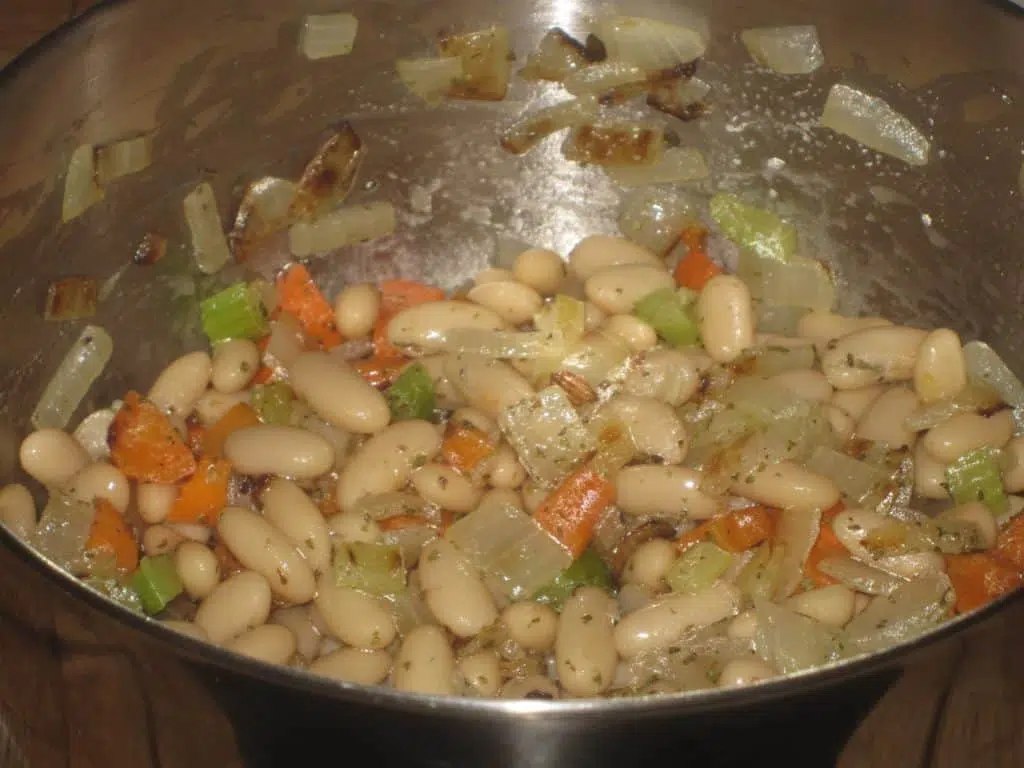
- Pour the veggies and beans into the roasting pan, or casserole, that you will cook the lamb shanks in. Take the lamb shanks from the plate where you kept warm and place them on top of the veggies and beans.
Step 5
- Now comes the beer part. Open the bottle of beer and pour it into the hot skillet or frying pan.
- Use the cooking fork to mix the beer and release anything that has cooked at the bottom of the hot skillet or frying pan.
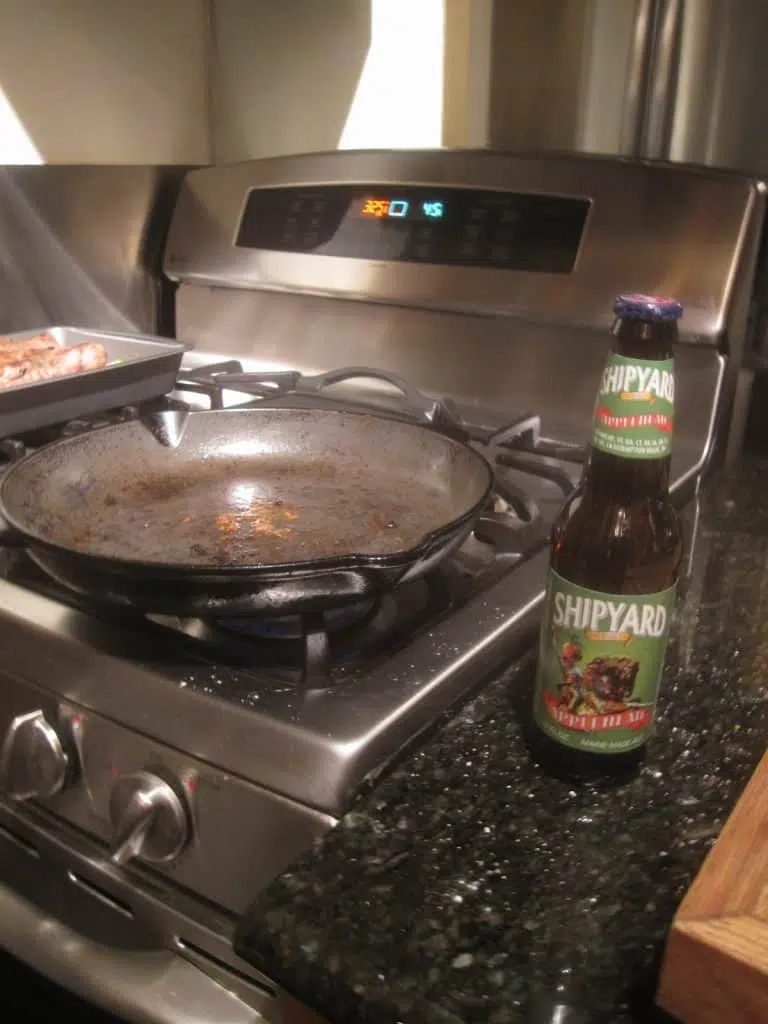
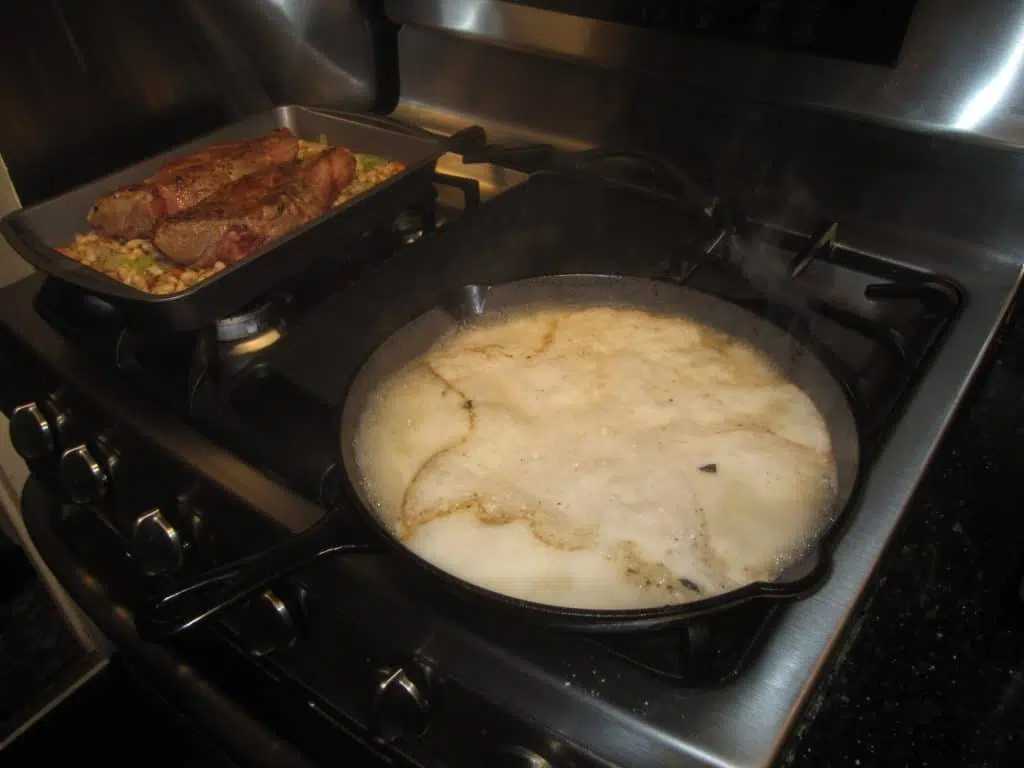
Step 6
- Turn the heat off and pour the beer over the Lamb Shanks and vegetables. If you have sprigs of fresh marjoram, chop it into little pieces and sprinkle over the top of everything. If you are using dried marjoram, use half a teaspoon sprinkled over everything.
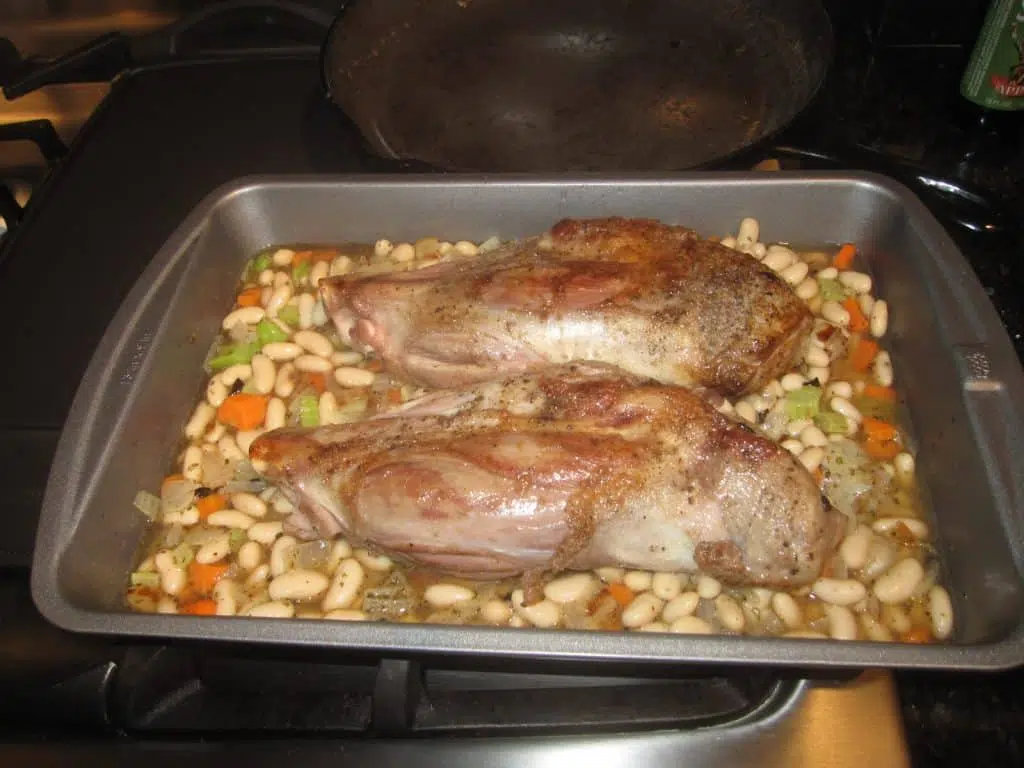
- If you are using a covered casserole, place it in the oven and leave it alone for two hours. Using a roasting pan as I did, cover it tightly with aluminum foil and place it in the oven for two hours.
The Grand Finale!
You should have two very tender, very succulent, quite tasty braised Lamb Shanks at the end of two hours. How do you know if it’s done? If the meat is falling off the bones, it is done.
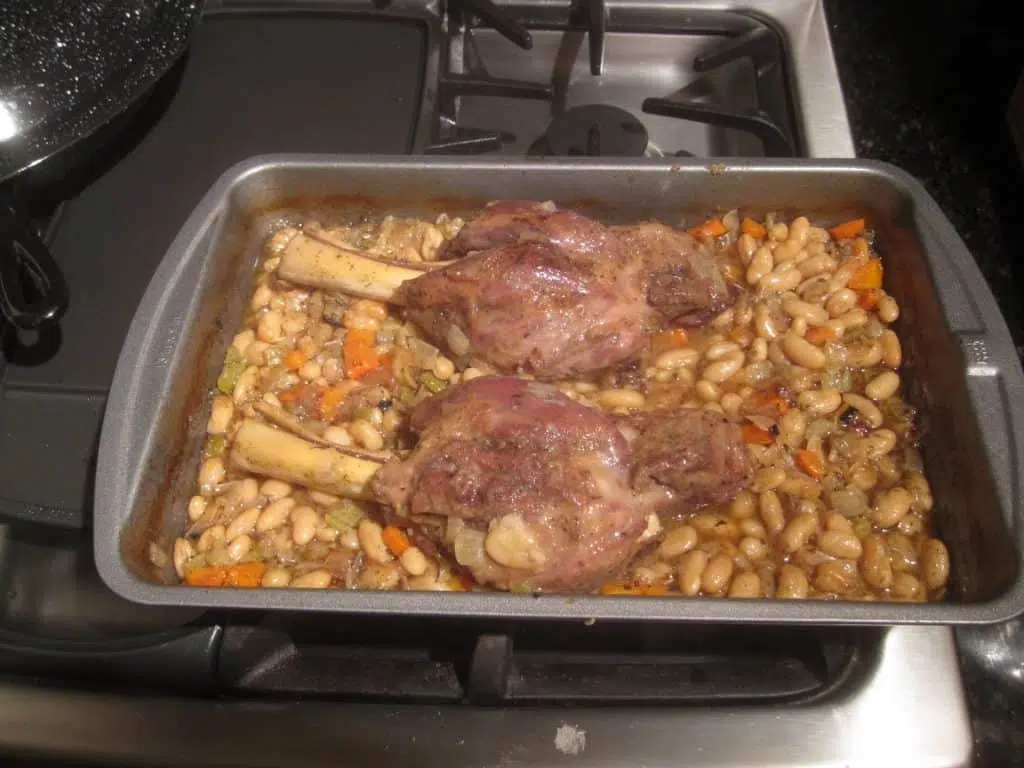
What did the beer add to the entire dish?
First of all, it was liquid. In braising, that’s a good thing. If it is a malty beer, the sweetness will complement the slight sweetness of the meat. If it is a hoppy brew, the hops’ tang will ensure that the dish’s richness does not take over.
After performing the above ritual, if you did not get the desired results, please don’t hesitate to contact me. It would help tremendously if you kept notes of everything you did. Even better, a video of the entire procedure would be most excellent.
I fervently hope I hear from no one. In that case, I’ll know that everything will have turned out all right!
